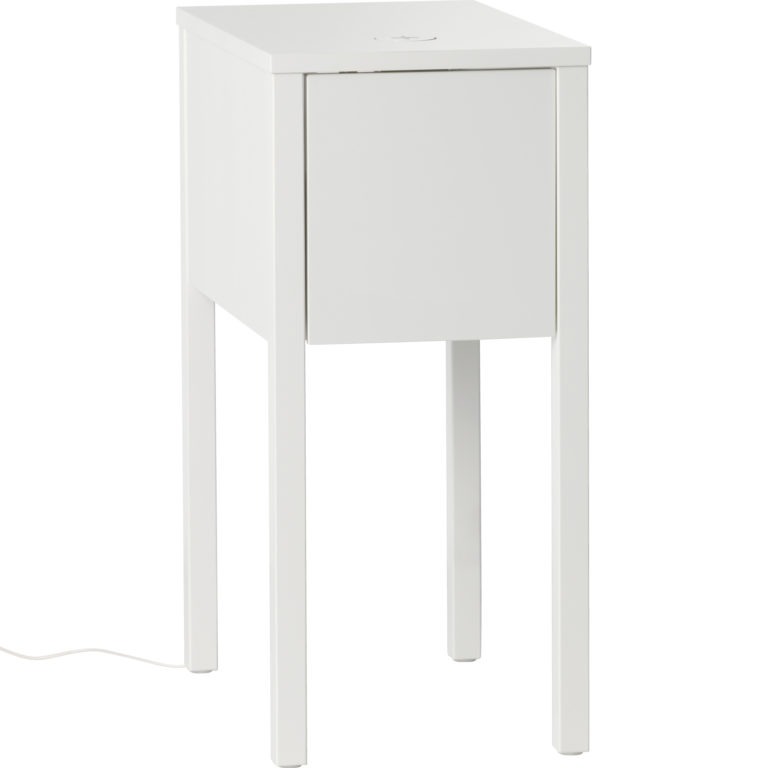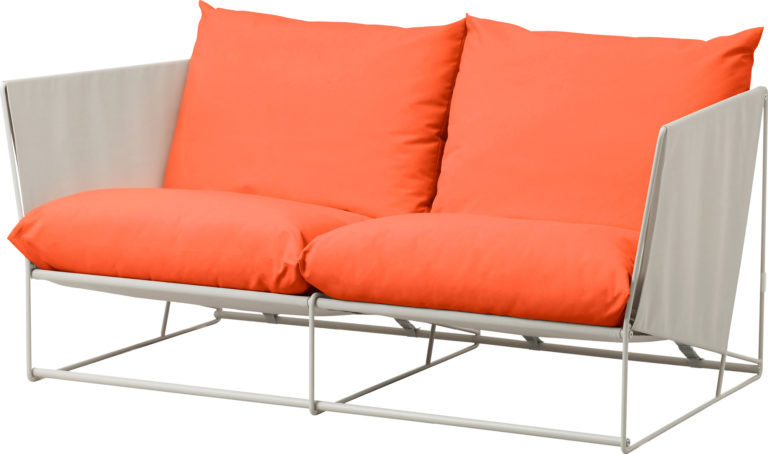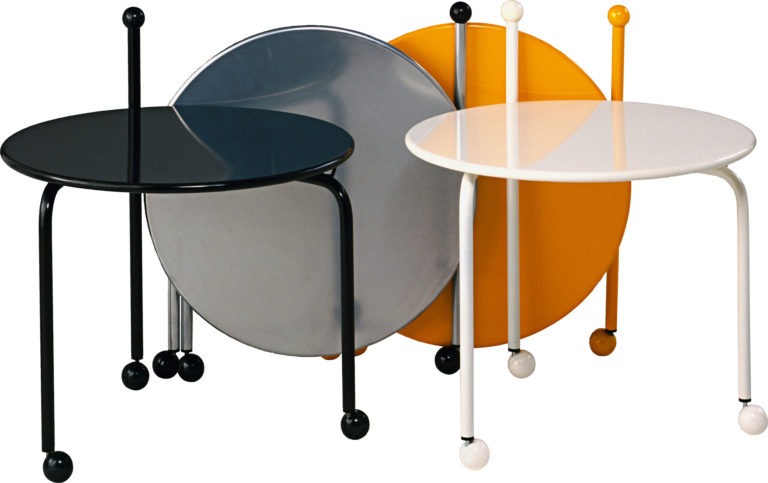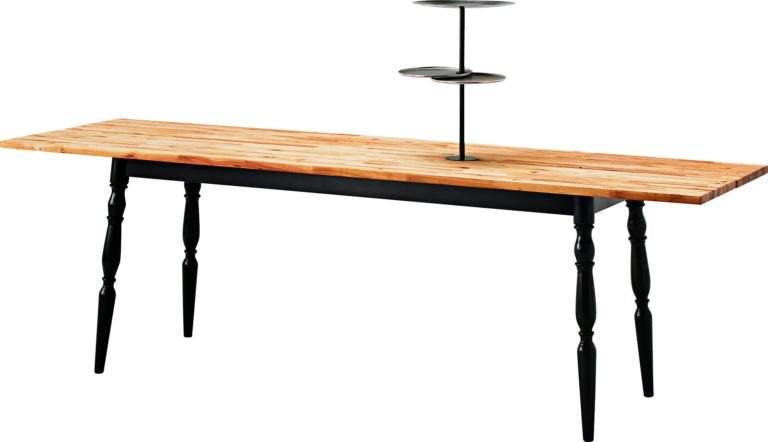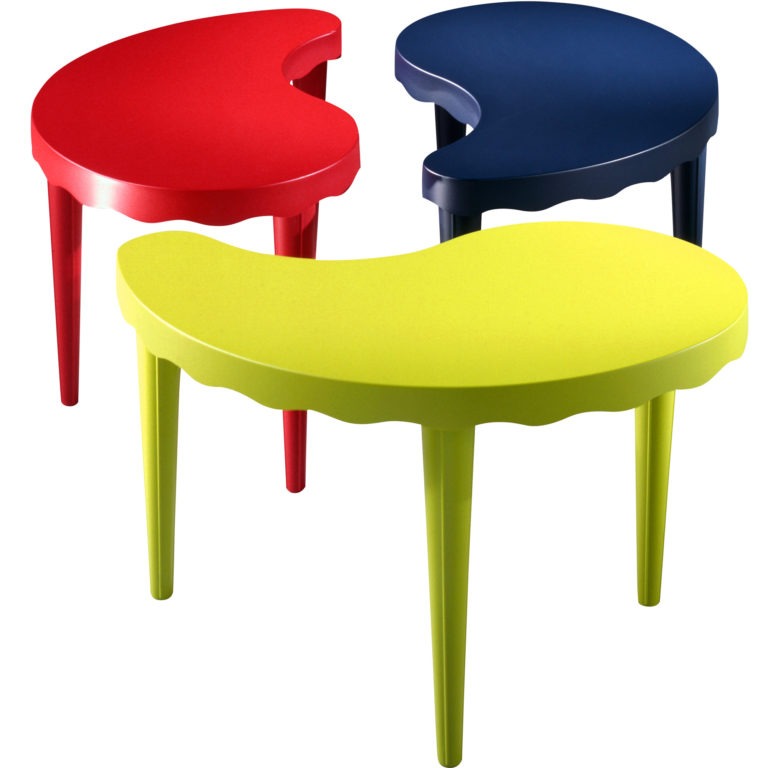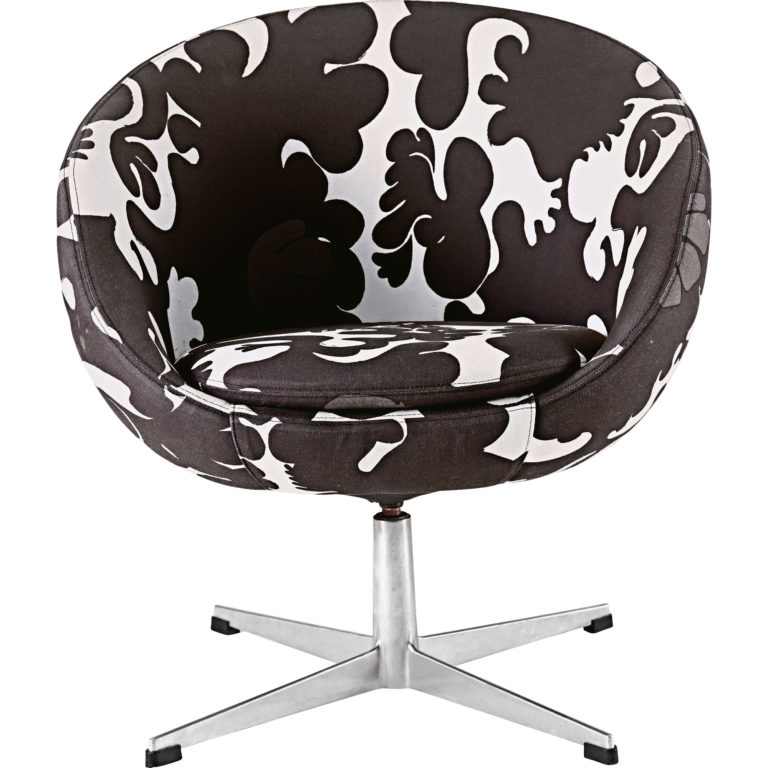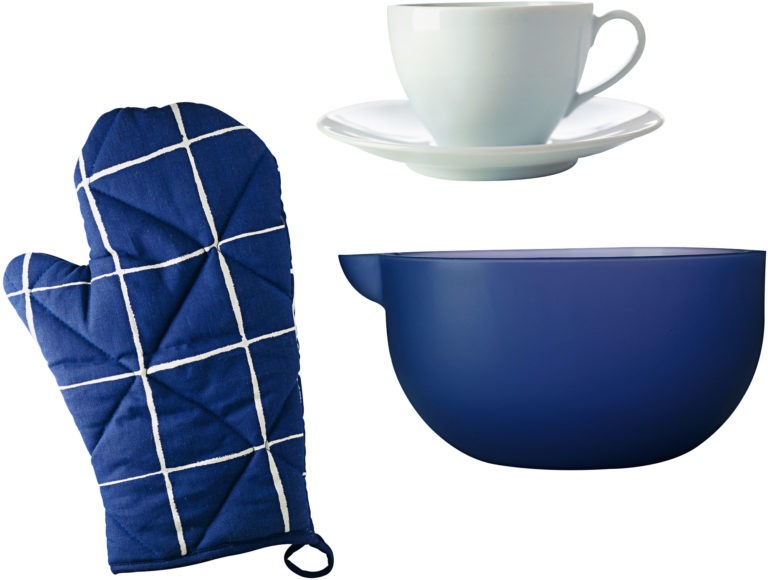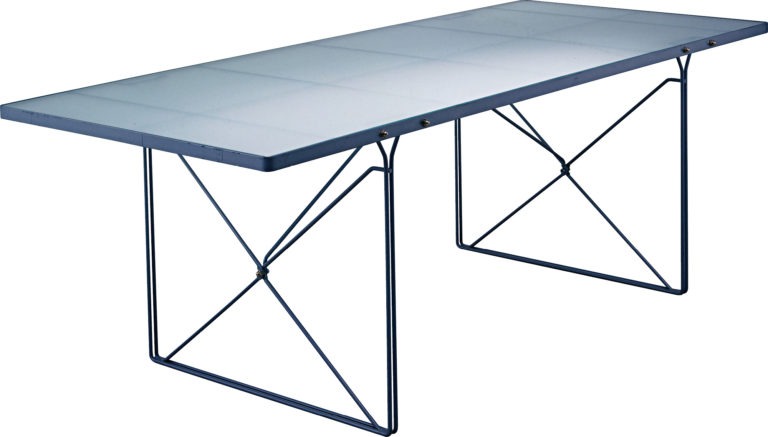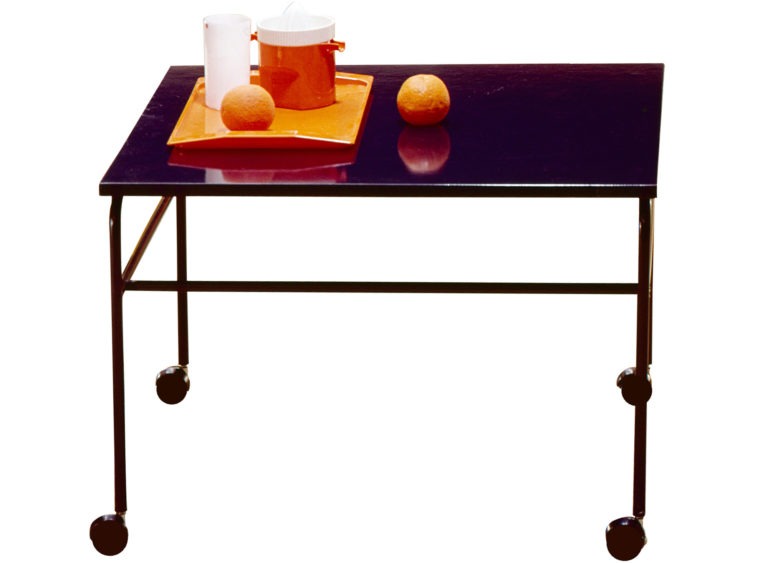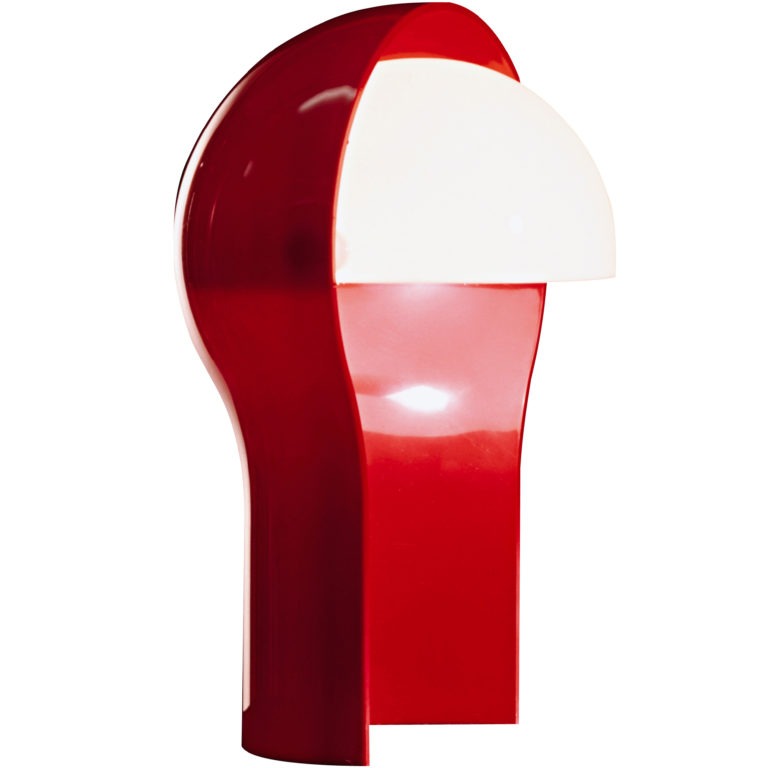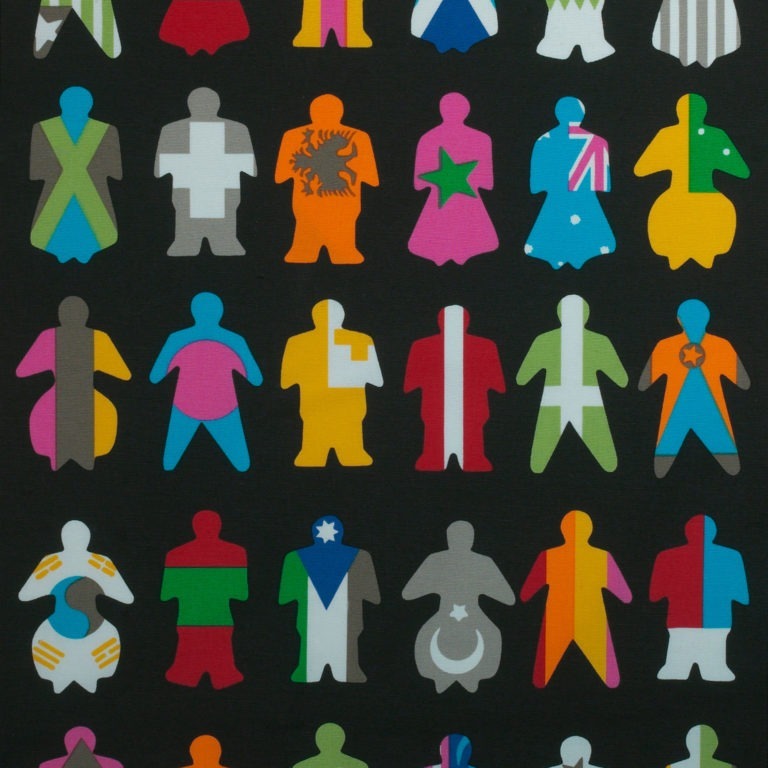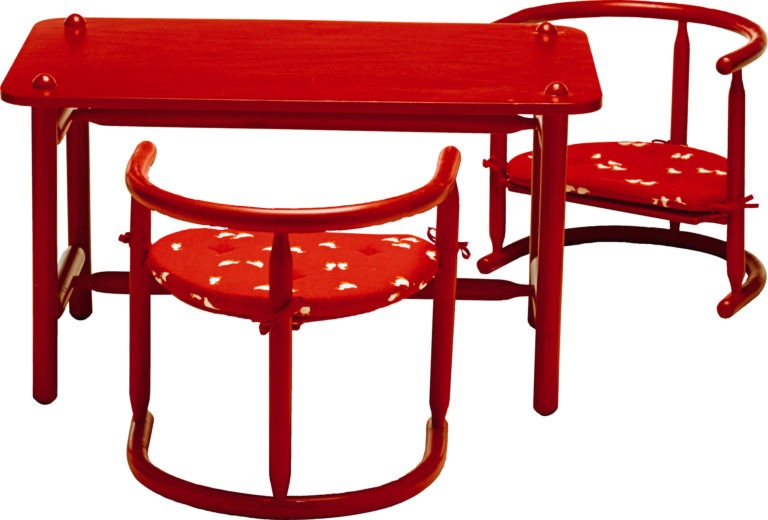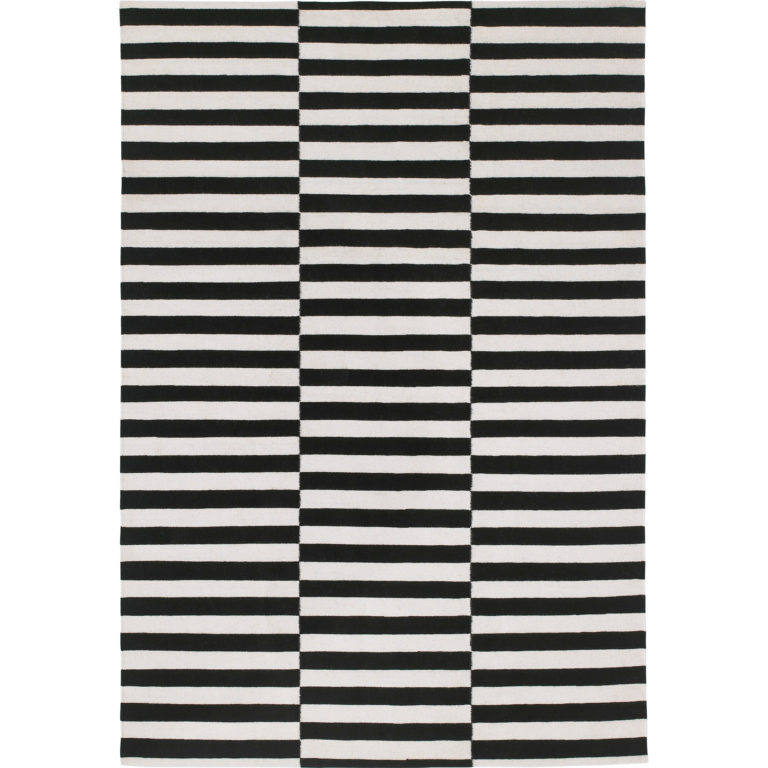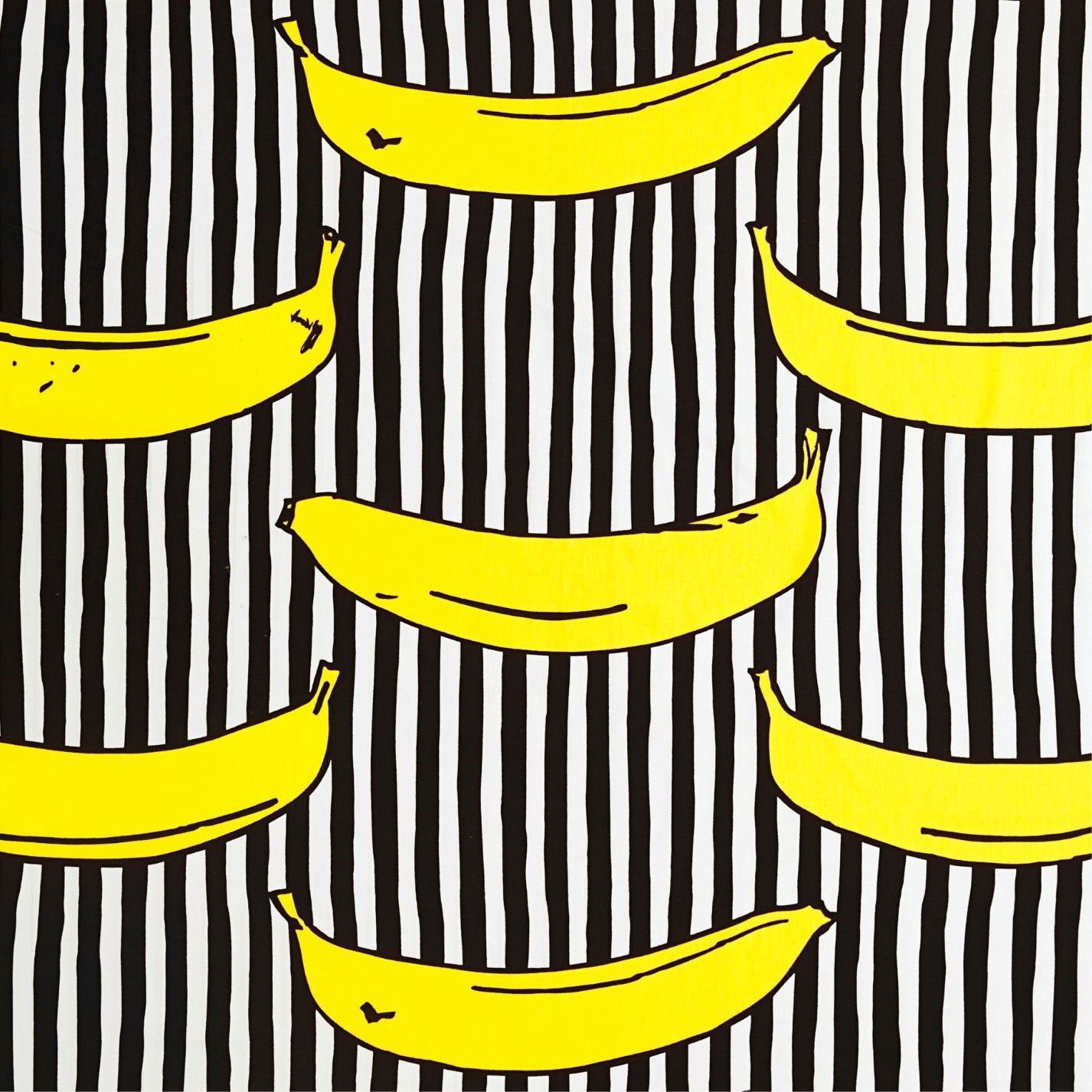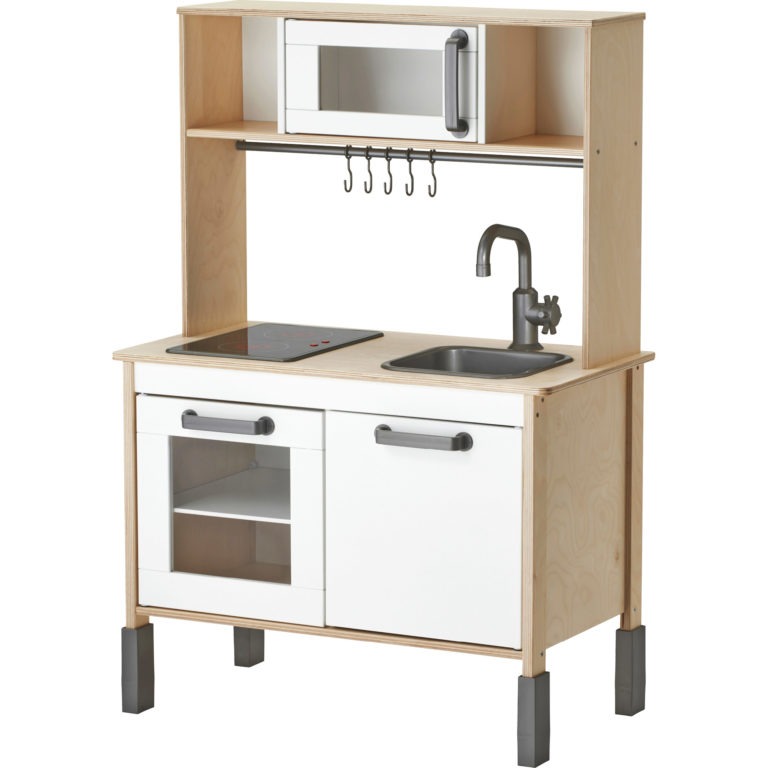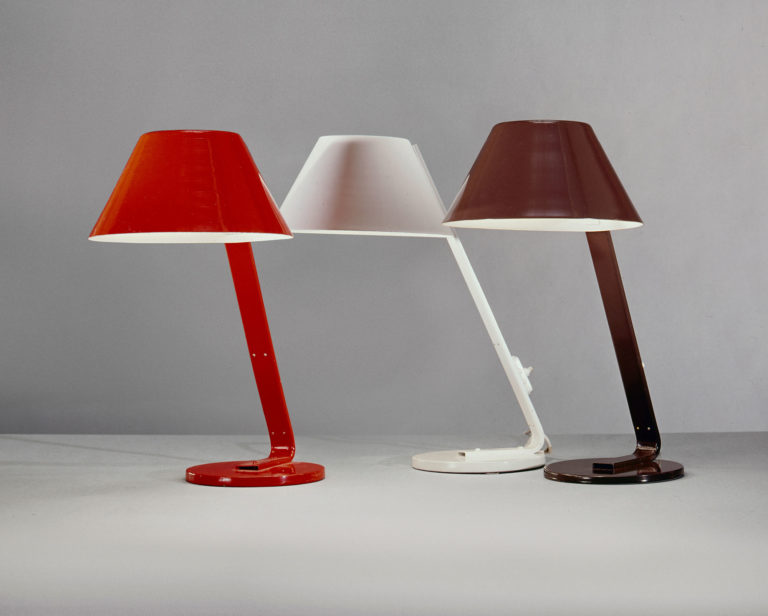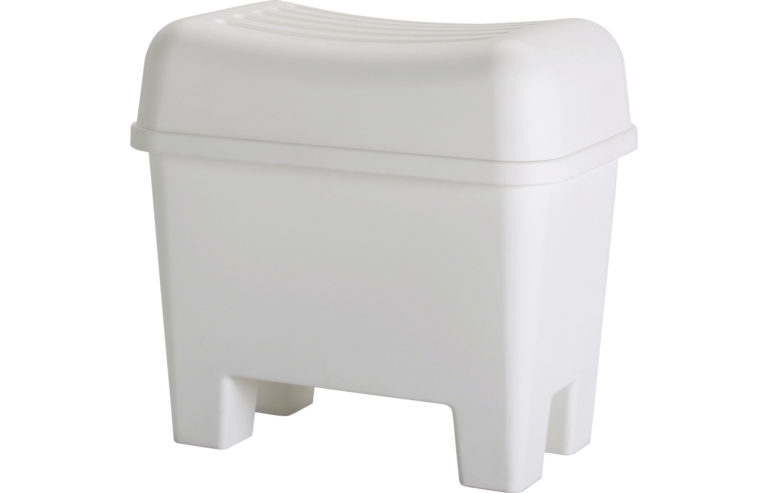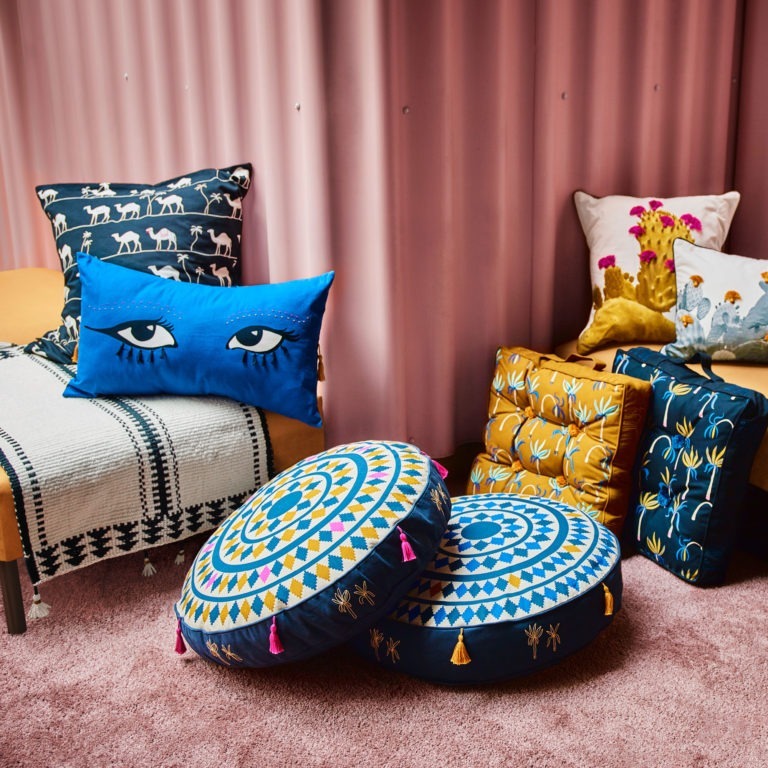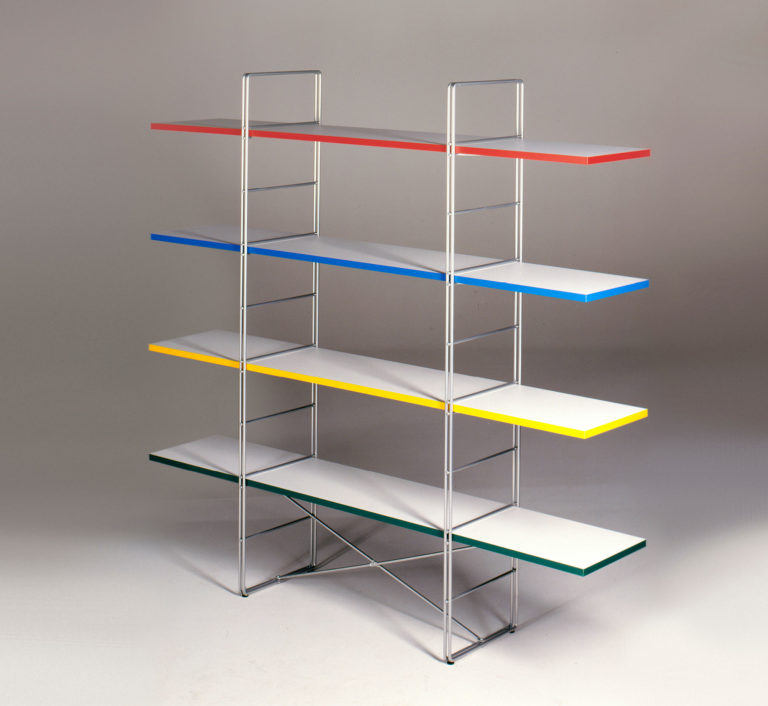The stool series OLE, DOLE, DOFF (the Swedish version of the children’s rhyme “Eeny, meeny, miney, mo”), came in various sizes and shapes. They were designed to fit different environments and address varying needs. The catalogue suggested placing these stools in the TV room, using them as a footrest by the lounge chair, positioning them in the hallway or by the bathroom vanity unit, or even in the young person’s room. At that time, many homes still had large pianos, so many families needed a “piano stool”. In this context, the sturdy OLE stool was ideal, featuring a base of solid oak and padding made of rubber shingle. Its wool upholstery was offered in, for example, blue, brown, yellow or brick red. The triangular, three-legged DOFF, covered in solid-coloured wool, had polyether foam padding.
DOLE
In the early 1960s, the IKEA catalogue proudly declared, “Every modern home needs some nice stools.” The round DOLE, along with its angular companions OLE and DOFF, were modernly designed stools – also referred to as “higher class” tabourets in the catalogue.
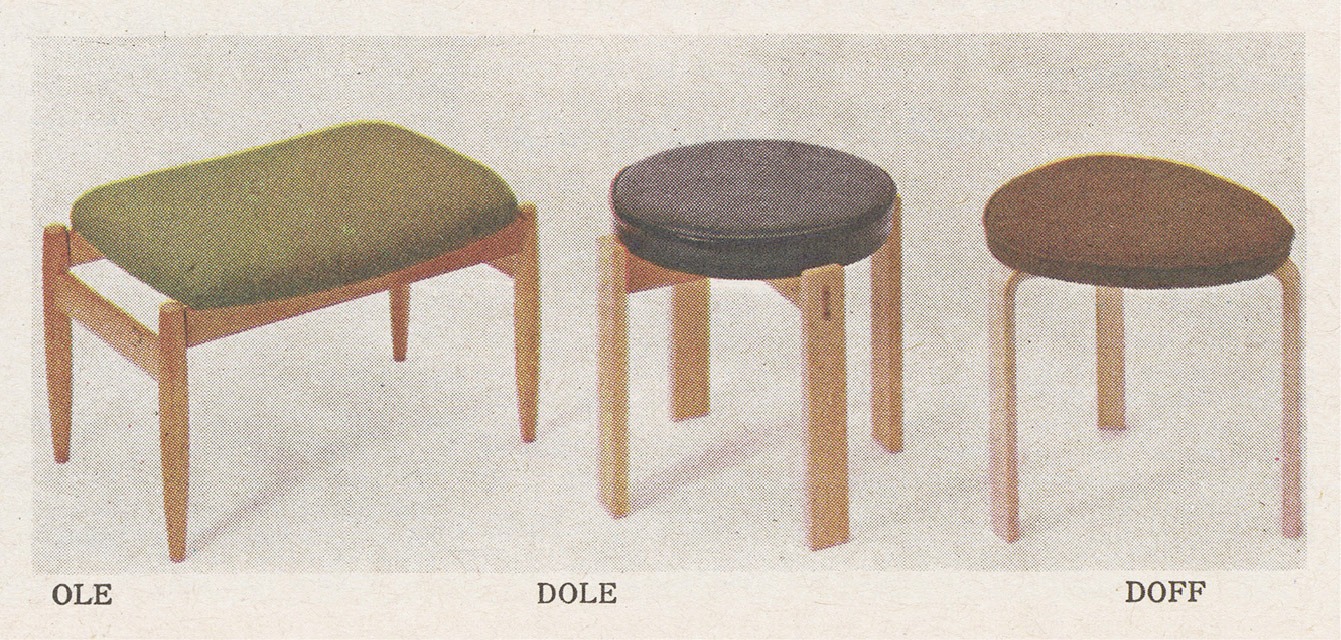
Perhaps the most popular stool in the series during the 1960s pop era was DOLE. This round model featured comfortable padding with a base made of beech. Its black or white faux leather upholstery felt both contemporary and stylish. Fast forward to 2023, an updated version of DOLE emerged in the IKEA Nytillverkad collection. Dubbed HOLMSJÖ, this iteration was as durable, stylish and comfortable as its predecessors. HOLMSJÖ had a seat and padding composed of 57 per cent recycled polyester. Its solid beech legs, showcasing visible mortise and tenon joints, added a touch of elegance, ensuring users sat pretty.

